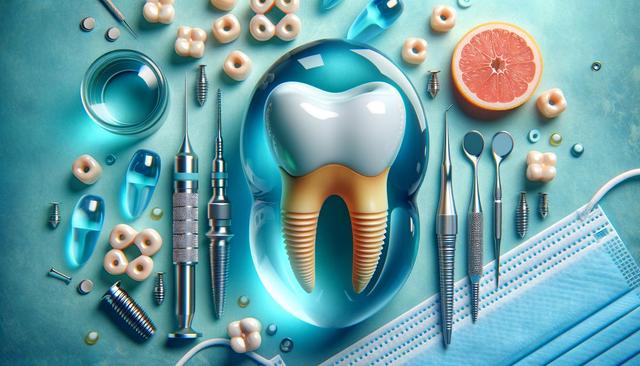What Are Dental Implants and How Do They Work?
Dental implants are artificial tooth roots made from biocompatible materials, typically titanium, that are surgically inserted into the jawbone. They serve as a stable foundation for fixed or removable replacement teeth, closely mimicking the function and appearance of natural teeth. Over time, the implant fuses with the bone in a process called osseointegration, providing a durable and secure base for crowns, bridges, or dentures. This makes dental implants a popular choice for individuals who want a long-lasting and natural-looking solution to tooth loss.
There are several benefits of dental implants, including:
- Improved chewing and speech compared to removable dentures
- Prevention of bone loss that can occur after tooth extraction
- Better oral hygiene since implants don’t require altering adjacent teeth
- Aesthetic appeal due to their natural look and feel
Understanding how implants work is a key step in deciding whether this treatment is right for you. A consultation with a dental professional can help determine suitability based on bone density, gum health, and overall oral condition.
Why Consider Dental Implants in the US?
The United States offers access to a wide range of dental implant solutions provided by licensed professionals with extensive training. Clinics across the country utilize modern surgical techniques and advanced imaging technology to ensure precise placement and effective outcomes. Whether you’re in a large city or a smaller community, it’s often possible to find skilled providers offering affordable dental implants in your area.
Several factors make getting dental implants in the US worthwhile:
- Access to certified specialists with experience in implantology
- Availability of cutting-edge materials and equipment
- Flexible financing options at many practices
- Rigorous safety and sterilization standards in dental facilities
With the growing demand for tooth replacement options, many practices now offer tailored care plans to meet varying needs and budgets. Patients can choose from single implants, implant-supported bridges, or even full arch replacements, depending on their condition and goals.
Finding Affordable Dental Implants in Your Area
While dental implants are a significant investment, affordable options are increasingly accessible. Many dental clinics provide pricing packages that include consultation, imaging, surgery, and follow-up care. Additionally, some providers participate in dental discount plans or offer in-house payment arrangements to make treatments more manageable.
If you’re looking for cost-effective options, consider these steps:
- Compare prices and services from multiple providers
- Ask about inclusive packages or promotional deals
- Look for clinics affiliated with dental schools, which may offer reduced-cost services
- Check eligibility for financing through third-party lenders
It’s also important to evaluate the full value of the treatment, not just the upfront cost. Choosing a qualified provider with a strong reputation can reduce the risk of complications and ensure a smoother recovery process, ultimately offering better long-term value.
The Dental Implant Procedure: What to Expect
Understanding the steps involved in receiving dental implants can help ease concerns and make the experience more predictable. The process typically starts with a thorough consultation, followed by diagnostic imaging to assess the jawbone and plan the placement. Once a treatment plan is finalized, the surgical phase involves placing the implant post into the jawbone under local anesthesia or sedation.
After the implant is placed, a healing period of several months allows for osseointegration. During this time, patients may wear temporary restorations. Once healing is complete, an abutment is attached to the implant post, and a custom crown is placed on top to restore full function and appearance.
Key phases of the procedure include:
- Initial consultation and planning
- Surgical implant placement
- Healing and bone integration
- Placement of the abutment and final crown
Recovery times vary, but most individuals return to normal activities within a few days. Maintaining good oral hygiene and attending follow-up visits are crucial for long-term success.
Maintaining Dental Implants for Long-Term Success
Once your dental implants are in place, proper care is essential to preserve their function and appearance. Fortunately, maintaining implants is similar to caring for natural teeth. Regular brushing, flossing, and professional dental cleanings help prevent infection and ensure the surrounding tissues remain healthy.
To keep your implants in optimal condition:
- Brush twice a day with a soft-bristled toothbrush
- Use floss or interdental brushes to clean around the implant
- Avoid hard or sticky foods that may damage the restoration
- Schedule regular check-ups with your dental provider
Dental implants are designed to last many years with the right care. However, issues such as gum disease, poor oral hygiene, or smoking can compromise implant stability. Staying proactive with your oral health and addressing concerns early can help extend the life of your restoration and support overall well-being.
Conclusion: Making an Informed Choice
Dental implants offer a dependable and aesthetically pleasing solution for replacing missing teeth. Whether you’re exploring options in a major city or seeking affordable dental implants in your area, understanding the treatment process, costs, and maintenance requirements can help you make a well-informed decision. Working with a qualified provider ensures a smooth experience and long-term satisfaction. Take the time to research, ask questions, and evaluate your personal needs to find the implant solution that’s right for you.
